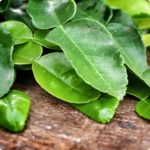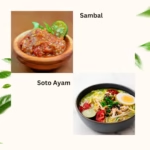What is Kaffir Lime?
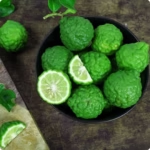
Kaffir lime (Citrus hystrix) is a small green citrus fruit with a bumpy, textured skin. Native to tropical climates in Southeast Asia, this plant belongs to the Rutaceae family and thrives in humid conditions. Cooks rarely eat the fruit raw due to its strong, bitter flavor; instead, they use it to impart a distinctive zest to dishes. Both the fruit and leaves feature prominently in Southeast Asian cuisine, while the essential oil finds popularity in perfumery. The rind and crushed leaves emit an intense citrus fragrance, making them valuable in culinary and aromatic applications.
What Are Kaffir Lime Leaves
Culinary Uses
Flavor Profile
Dishes Featuring Kaffir Lime
Thai Cuisine
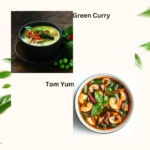
These leaves are essential in Thai curries and soups, such as Tom Yum and Green Curry.
Indonesian Dishes
Malaysian and Burmese Cuisine
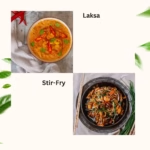
These leaves also appear in Malaysian laksa and stir-fries, as well as in Burmese dishes.
Culinary Uses Across Southeast Asia
Additional Uses
Health Benefits
Kaffir lime is not just a culinary delight; it’s also a powerhouse of health benefits:
- Rich in Nutrients: Contains vitamin C, antioxidants, and essential oils.
- Digestive Aid: Traditionally used to soothe stomach issues and promote digestion.
- Antimicrobial Properties: The oil from this fruit provides natural antibacterial and antifungal effects.
- Stress Relief: Aromatherapy uses the scent of this fruit for its calming effects.
How to Use Kaffir Lime
In Cooking
In Beverages
To create a refreshing and aromatic flavor, infuse kaffir lime zest or leaves in tea, cocktails, or sparkling water. This distinctive addition elevates beverages, making them more vibrant and enjoyable
In Desserts
Incorporate kaffir lime zest into cakes, sorbets, or custards to add a delightful tangy twist. This unexpected flavor can brighten up your desserts, offering a refreshing contrast to sweetness.
Storage and Preservation
-
Fresh Storage: For short-term use, wrap the leaves in a damp paper towel and place them in a sealed bag or container in the refrigerator. This method helps maintain their moisture and can keep them fresh for up to two weeks. Be sure to check periodically for any signs of spoilage.
- Freezing: If you want to preserve your lime leaves or zest for longer periods, freezing is an excellent option. Place the leaves or zest in an airtight container or freezer bag, ensuring to remove as much air as possible before sealing. This method allows you to enjoy the vibrant flavor of this fruit for several months, making it easy to add to dishes whenever you need.
-
Drying: Another effective way to store lime leaves is by drying them. Simply air-dry the leaves in a cool, dark place until they are completely crisp. Once dried, store them in an airtight jar away from light. While dried leaves may lose some of their vibrant aroma, they can still impart a subtle flavor to your dishes.
Kaffir Lime Substitutes
If you can’t find kaffir lime, try these substitutes:
- Lime Zest and Basil: Combining lime zest with fresh basil can replicate the unique citrusy aroma of kaffir lime. The zest brings a bright, zesty flavor, while the basil adds an aromatic herbal note that complements Asian dishes beautifully.
- Lemongrass and Lime Zest: This combination works particularly well in soups and curries. Lemongrass provides a fresh, lemony flavor, and when paired with lime zest, it creates a similar flavor profile to kaffir lime, enriching the overall taste of your dish.
-
Bay Leaves and Lime Juice: For stews and marinades, using bay leaves along with a splash of lime juice can serve as a suitable alternative. The bay leaves impart a subtle earthiness, while the lime juice adds the necessary acidity and brightness, helping to balance the flavors.
Conclusion
FAQs
What is kaffir lime?
It is a citrus fruit known for its aromatic leaves and bumpy-skinned fruit.
Where is kaffir lime used?
People use it in Southeast Asian cuisine and traditional medicine.
What does this fruit taste like?
Its flavor is citrusy, tangy, and slightly bitter.
Is kaffir lime healthy?
Yes, it’s rich in vitamin C, antioxidants, and essential oils with health benefits.
How do I use its leaves?
Add them to soups, curries, or tea for a tangy aroma.
What can I substitute for kaffir lime?
Use lime zest with basil or lemongrass and lime juice.
How do I store kaffir lime?
Refrigerate fresh leaves or freeze them for long-term use.
Can I eat this fruit raw?
The fruit is too sour to eat raw but can be used in cooking.
Is kaffir lime good for the skin?
Yes, its essential oils are used in skin care for their antibacterial properties.
For more food trend articles visit



Thank you for reading, for more interesting articles visit our homepage.


